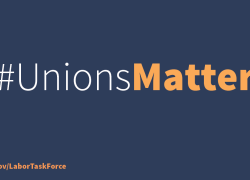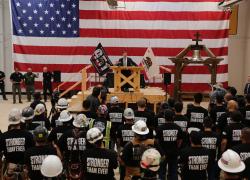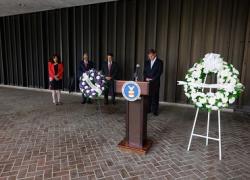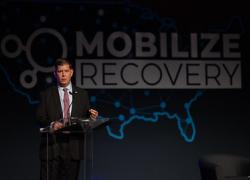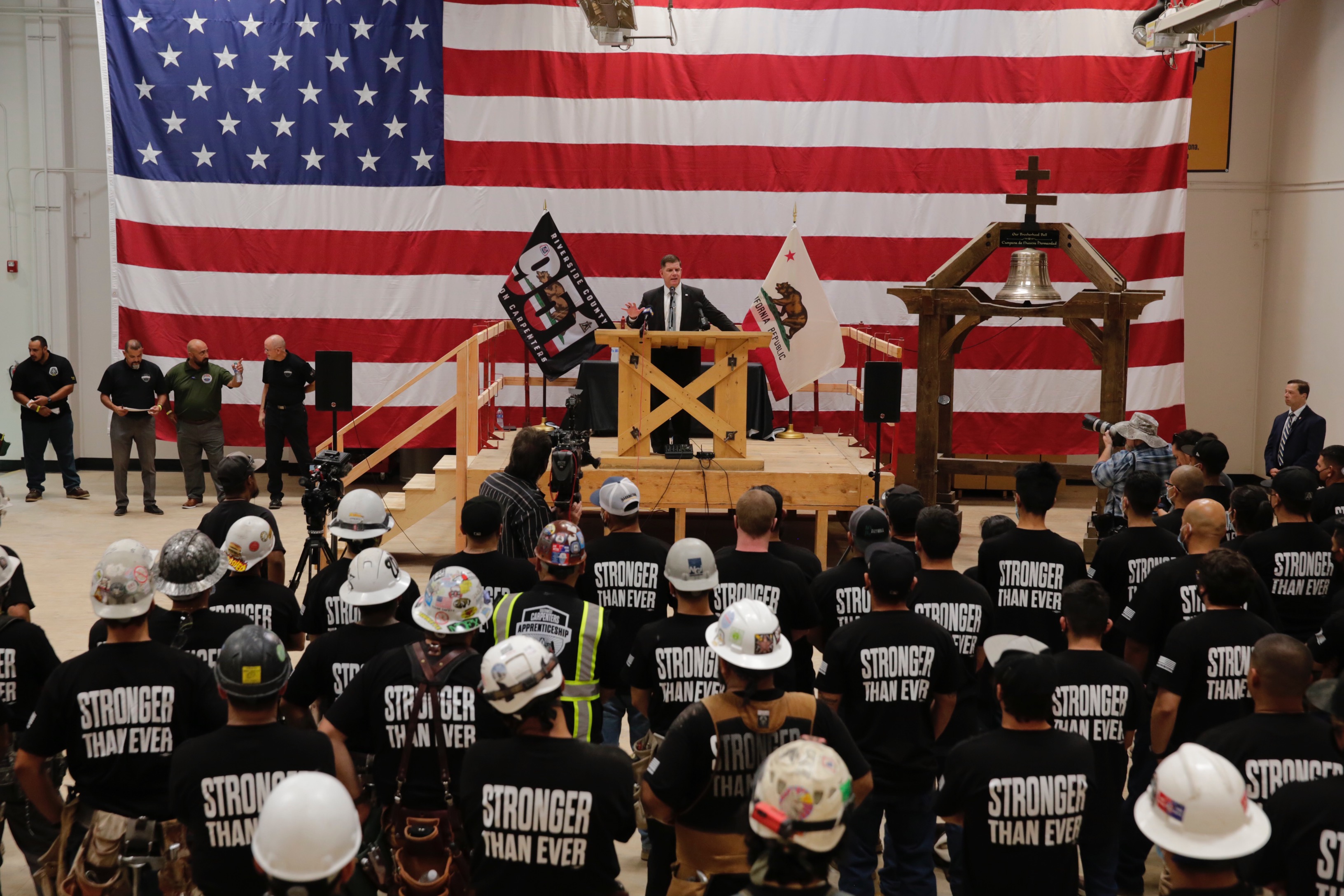
I am where I am today because of unions. My parents came to America looking for economic opportunity, and they found it after my father joined the Laborers Union Local 223 in Boston. As a union member, he earned enough wages to support our family and he also got a say in his working conditions. When I started working construction at 19, I joined the same union and eventually became president of the local.
My union not only helped keep me employed — it helped me get sober. With good health benefits, a member assistance program and a supportive community, I was able to address my alcoholism and follow new opportunities as a Massachusetts State Representative, the head of the Boston Building Trades, the Mayor of Boston and now your Secretary of Labor.
Unfortunately, stories like mine have become less and less common. Despite unions’ long history of fighting for higher wages and lifting up workers’ voices in their workplaces, communities and government, union density has been declining for decades. In the 1950s, more than 30% of the U.S. workforce was part of a union. Today, only 10.3% of our workforce is unionized. The consequences of this decline have been widespread and painful for millions of working-class families: Declining union representation is associated with deepening economic inequality, stagnant real wages, and the shrinking of the middle class.
It should be no surprise, then, that more workers want to join unions. In fact, more than 60 million non-union workers say they would join a union if given the chance — including nearly 75% of young workers age 18-24.
So what’s keeping these workers from organizing? For one, many non-union workers are employed by companies that are actively working to keep them from forming unions. And many simply do not even know where to begin: Only about 8% of workers age 18-24 say they would know how to form a union. This is a serious problem for workers, for our economy and for our democracy.
That’s why the Biden-Harris Administration took action and established the White House Task Force on Worker Organizing and Empowerment. This first-of-its-kind government-wide effort is promoting policies, programs and practices to help more workers organize and successfully bargain with their employers.
As vice-chair of the task force, I’m proud to serve alongside Chair Vice President Kamala Harris and more than 20 heads of White House and government agencies to help the task force accomplish its critical mission. And as indicated by the recommendations in a new task force report endorsed by President Biden, the Department of Labor is playing a leading role in these efforts. Here are a few of the ways we’re working to advance workers’ right to organize:
-
Shedding light on employers’ use of anti-union consultants through a new initiative led by our Office of Labor-Management Standards.
-
Ensuring workers know their organizing and bargaining rights by leading efforts to make sure more workers are aware of their federally protected rights to organize and collectively bargain with their employers.
-
Protecting workers who organize from illegal retaliation by addressing and preventing employer retaliation against workers who exercise their labor rights.
-
Establishing a resource center on unions and collective bargaining to provide critical information to workers, unions, employers, researchers, other government agencies and policymakers.
-
Collecting and reporting more information on unions’ role in the U.S. economy to help workers, policymakers, labor organizations, employers and researchers better understand the effect of unions on workers and the economy.
-
Advancing equity across underserved communities by supporting worker organizing and collective bargaining.
Through these actions and many more, the task force is putting the federal government’s policy of encouraging worker organizing and collective bargaining into action. The fact is, increasing union membership means a stronger economy and better quality of life for workers and their families — and I’m living proof.
Marty Walsh is the U.S. Secretary of Labor. Follow him on Twitter and Instagram at @SecMartyWalsh.

 U.S. Department of Labor Blog
U.S. Department of Labor Blog
